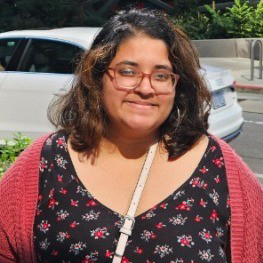Mental illness has been on the rise for individuals within Asian American, Native Hawaiian, and Pacific Islander (AANHPI) communities. Compared to those of other racial/ethnic backgrounds, individuals within AANHPI communities are less likely to seek out and receive mental health treatment. A community analysis of mental health experiences of AANHPI communities in California reported that nearly 24% of NHPI adults and 16% of AA adults identified needing mental health support. However, even when AANHPI individuals with identified mental health support needs seek treatment, the same study states that 42% of NHPI adults and 31% of AA adults have trouble accessing services (especially when it comes to accessing culturally competent mental health care). As an Indian-American first-generation immigrant, I want to use May, as both AANHPI Heritage Month and Mental Health Awareness Month, to have a conversation about mental health experiences and obstacles. For this piece, I spoke with a few AANHPI NPWF colleagues about some of the issues contributing to stigmas and barriers to mental health support in our community.
One of our staff members shared their perspective as an East Asian individual where they were taught growing up that “depression was something that a person could choose to overcome if they were strong, or depression would consume them if they are weak.” Although the vastly diverse AANHPI communities do not have a monolithic experience, “the concept of losing face or bringing shame to family and community, a fear that’s universal across many Asian cultures, can heavily affect many Asian Americans’ decision to get help” for mental health needs. Many AANHPI communities attribute mental health needs to a weak mind or lack of willpower. For example, one South Asian staff member shared that “AANHPI individuals are way less likely to seek mental health help because most of us grew up in invalidating environments where our parents and loved ones didn’t believe we needed help or believed we just needed to tough out how we were feeling.”
While talking about how our loved ones have faced generations of displacement and trauma, another staff member shared, “Our families…likely could have benefitted from therapy! But because they survived without it, we are expected to as well.” Community perseverance in the face of adversity has carried AANHPI communities through surviving violence and oppression. As a result, this unrealistic expectation of resilience and the survivor mentality (“we’ve survived and endured worse”) deter help-seeking behaviors within AANHPI communities. Mental health problems often are perceived as something to simply accept, endure, and conceal – especially due to ripples of intergenerational trauma from an inability to heal and reconcile past conflict. Stemming from histories of colonization, refugee crises, war and conflict, and racism and discrimination, trauma runs deep throughout many generations in AANHPI communities. Many AANHPI families suppress traumatic history in silence, which slows down and prevents healing – consequently passing down this trauma to future generations.
The societal pressures stemming from the model minority stereotypes further intensify the expectation that AANHPI communities must accept and endure any mental health needs. The “Model Minority Myth” assumes that all AANHPIs are uniformly “well-adjusted”, attain higher levels of socioeconomic success through academic and professional excellence (especially compared to other minority groups), and perfectly conform to social norms. As our NPWF colleagues shared their experiences, it was clear that the immense stigma and pressure are still “very pervasive in Asian and immigrant families that [we] know of: the “right” thing to do is to put your head down and keep working hard against any obstacles.” These harmful stereotypes to excel under any circumstance can prevent community members from seeking mental health care.
AANHPI mental health is an evolving public health issue with many nuances surrounding social barriers as well as cultural ones – these barriers cannot be solved solely by the individual experiencing mental health challenges. Ultimately, we must address mental health stigma and shame, intergenerational trauma, and the impacts of the model minority myth as we advocate for increased access to culturally competent, quality mental health care. There was a common sentiment amongst staff members that because “talking about your feelings [can be] taboo… It’s so important for our community to feel supported and listened to.” After speaking with NPWF colleagues on this topic, I am hopeful that these conversations will support us all in healing and growing across our many communities. As we continue discussions on destigmatizing mental health needs within AANHPI communities, it’s crucial to ask ourselves what it means to dismantle harmful systems (such as the model minority stereotypes) that prevent AANHPI individuals from seeking the mental health treatment that they need.


